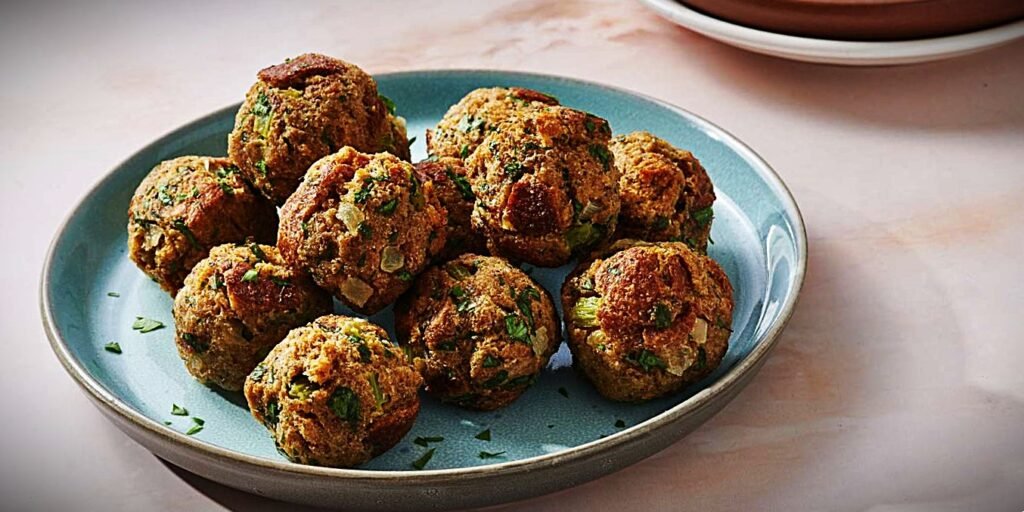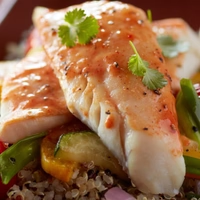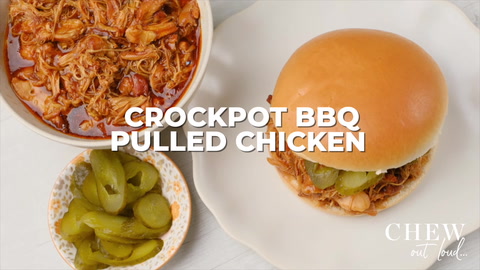How to Make Bread Stuffing Balls, 1940s Recipe: A Nostalgic Guide to Classic Comfort Cooking

Preface
There’s a warm, old-fashioned charm in Stuffing Balls to fashions from the 1940s — a time when home cooks stretched constituents, wasted nothing, and invested every mess with creativity and care. The world was in the midst of change, shaped by World War II and rationing, yet kitchens still produced comforting, hearty dishes that nourished body and spirit. One similar form is the humble chuck filling ball, a pleasurable twist on traditional filling that was easy to portion, simple to serve, and packed with flavor.
Learning how to make chuck filling balls, 1940s form style, is like stepping back into a kitchen where the air smells of roasting flesh, stewing gravies, and fresh sauces from the theater. This dish wasn’t just a side — it was a way to make do with what you had while creating a memorable commodity for the regale table.
In this composition, we’ll explore the origins of the chuck filling ball, the typical constituents and cuisine styles of the 1940s, and a step-by-step form you can recreate in your own kitchen. We’ll also partake variations, serving suggestions, and tips for adding a touch of authentic, quaint flavor to your cuisine.
The History of Bread Stuffing Balls in the 1940s
The 1940s were a decade of both economy and imagination in the kitchen. During wartime, food rationing meant items like adulation, meat, and sugar were frequently in short force. Home culinarians had to be resourceful, stretching masses like chuck, potatoes, and onions into filling refectories. Stuffing was a perfect illustration of this resourcefulness — made from banal chuck ( nothing went to waste), sauces from the theater, and the drippings or broth from whatever meat was available.
Rather of incinerating filling in a large dish or inside a lemon, some culinarians began forming it into small, handheld balls. This had several advantages
Portion Control – Everyone got an equal share, especially useful when constituents were limited.
Indeed-the balls ignited more snappily and unevenly than stuffing inside a raspberry.
donation – They looked neat on the plate.
Essential constituents in a 1940s Bread Stuffing Ball form
While variations were grounded on region and vacuity, the core constituents were remarkably harmonious in the 1940s
Bread – frequently many days old, cut into cells or torn into small pieces.
Onions – Diced and smoothly sautéed for flavor.
Fat – Bacon grease, funk drippings, or a small quantum of adulation( if available).
Liquid – generally broth or milk to moisten the chuck.
Seasonings – swab, pepper, and sauces similar as savant, parsley, or thyme.
Binder – Eggs were occasionally added to help hold the admixture together.
How to Make Bread Stuffing Balls, 1940s form( Step- by- Step)
Then’s an authentic- inspired interpretation grounded on mid-century cookbooks and home chef notes from the period.
constituents
6 mugs banal chuck , cubed( white or whole wheat)
1 medium onion, finely minced
2 tbsp bacon drippings( or adulation, if available)
1 mug funk or lemon broth( plus more as demanded)
1 large egg, smoothly beaten
2 tsp dried savant( or fresh if available)
1 tsp swab
tsp ground black pepper
Fresh parsley, diced( voluntary, for trim)
Instructions

Prepare the Bread
Spread chuck cells on a baking dish and let them dry out for many hours( or smoothly toast them in a low roaster if you’re in a hurry).
Cook the Onions
In a skillet, melt the bacon drippings over medium heat. Add onions and cook until softened but not browned, about 5 twinkles.
Mix the Stuffing Base
Place chuck cells in a large mixing coliseum. Add cooked onions and drippings. Sprinkle with salt, swab, and pepper.
Moisten the Mixture
Pour broth over the chuck admixture, a little at a time, tossing gently until the chuck is unevenly bedewed but not soppy.
Bind the Admixture
Stir in the beaten egg, mixing just enough to combine. This will help the balls hold their shape.
Shape the Balls
With clean, slightly damp hands, form the admixture into balls about the size of a golf ball.
Singe the Stuffing Balls
Place the balls on a greased baking dish. Singe in a preheated roaster at 350 °F( 175 °C) for 20 – 25 twinkles, turning formerly half through, until smoothly browned and hotted through.
Serve
Arrange on a server alongside repast funk, lemon, or pork. Garnish with fresh parsley if available.
Tips for Authentic 1940s Flavor
Use Bacon Drippings or Poultry Fat – These were common cuisine fats in the 1940s and add a rich, savory taste.
Fresh Garden Sauces – numerous home cooks grew sage, thyme, or parsley in small gardens to condense allotted food.
Make Do with What You Have – If you want a component, substitute freely — wartime culinarians clearly did.
Slightly Crisp Exterior – Singe long enough to produce a golden crust for discrepancy with the soft innards.
Serving Suggestions from the 1940s Table
Bread stuffing balls were frequently served with
rally funk or lemon for Sunday regale.
Pork chops or repast pork( especially in ranch kitchens).
Gravy made from visage drippings.
Seasonal vegetables like carrots, turnips, or cabbage.
They were also a favorite during leaves, frequently made alongside cranberry sauce and mashed potatoes.
Variations from Vintage Cookbooks
Indeed, in the 1940s, culinarians substantiated their filling balls
Potato- Bread Mix – Stretch the dough with mashed potatoes for a heartier texture.
Oyster Stuffing Balls – Popular in littoral regions, adding diced oysters for a special occasion.
Nut and Fruit Additions – Diced hominy or raisins were occasionally added for vacation refections.
Herb- Heavy performances – Some fashions doubled the savant for a bolder herbal punch.
Making Bread Stuffing Balls with a Vintage Touch
While the original 1940s form is dateless, you can contemporize it slightly for convenience without losing its old-fashioned charm
Use store-bought broth if the manual isn’t on hand.
Add a blend of fresh and dried sauces for depth.
Sign on the diploma paper for easy remittance.
For a gluten-free interpretation, exchange traditional chuck for gluten-free chuck cells commodity that wouldn’t have been common in the 1940s but works for the moment’s salutary requirements.
Why This Form Endures
The appeal of Chuck Filling Balls lies in their simplicity, flexibility, and comfort factor. They transfigure humble, everyday constituents into a commodity that feels special, and they elicit a sense of home no matter where you’re from. In the 1940s, they were a clever way to stretch coffers; moment, they’re a nostalgic nod to a time when cuisine was about flavor, family, and making the most of what you had.
Conclusion
Learning how to make chuck filling balls, 1940s form style, is further than following a set of instructions; it’s an experience in cuisine history. With just chuck, onions, a bit of fat, and many sauces, you can recreate a dish that graced innumerable regale tables during one of history’s most grueling decades. Whether served for a vacation feast or a simple Sunday supper, these golden- brown, savory mouthfuls carry the warmth of tradition in every nibble.





